This is a schematic of the interior of Jupiter.
NASA
The Liquid Hydrogen Layer
The first liquid layer inside Jupiter, immediately under the atmosphere, is the liquid hydrogen layer. The hydrogen atmosphere becomes thicker and thicker, a fog with more and more liquid hydrogen droplets, until the pressure of gas from regions above forces hydrogen to completly change from the gas form to the liquid form. This changes occurs at a depth of roughly 1000 km (650 miles) from the level of the first cloud deck. The hydrogen, in liquid form then behaves much as the terrestrial ocean does in forming currents and convection patterns for the purpose of carrying heat from the inside to the outside of Jupiter.
Under the liquid hydrogen layer is a liquid metallic hydrogen layer. This layer also forms complicated currents and convection patterns, but because the layer is metallic, it is also able to conduct electricity. This property of the liquid metallic hydrogen layer, coupled with the stirring action of Jupiter's terrifically fast spin rate (Jupiter spins once in 10 hours), is what produces Jupiter's enormously powerful and extensive magnetosphere.
You might also be interested in:
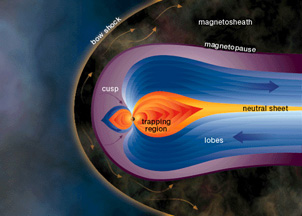
Jupiter's magnetosphere is a unique object in the solar system. It is the biggest object in the entire solar system. Not only is it big enough to contain all of Jupiter's moons, but the sun itself could
...more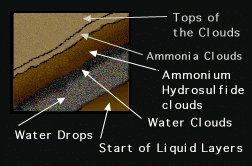
There is no surface to the giant planets, only a gradual transition from the atmosphere, as depicted in this drawing. The hydrogen and helium of which Jupiter is mostly composed change to liquid form under
...more
There is no surface to the giant planets, only a gradual transition from the atmosphere, as depicted in this drawing. The hydrogen and helium of which Jupiter is mostly composed change to liquid form under
...more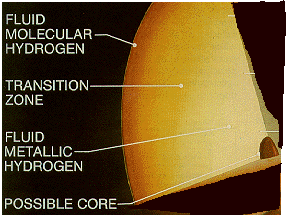
The first liquid layer inside Jupiter, immediately under the atmosphere, is the liquid hydrogen layer. The hydrogen atmosphere becomes thicker and thicker, a fog with more and more liquid hydrogen droplets,
...more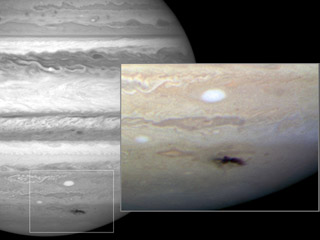
On the night of July 19, 2009, Anthony Wesley noticed a dark splotch on Jupiter that hadn't been there before. Wesley, an amateur astronomer in Australia, had discovered the remnants of a huge impact on
...more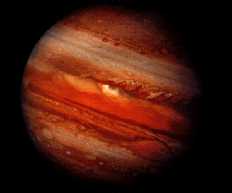
Atmospheres of the giant planets have definetely evolved from their formation out of the primitive solar nebula. How much they have evolved remains to be seen, however. Because of their enormous gravity,
...more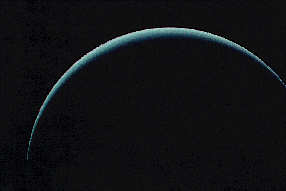
The mesosphere of Jupiter is a region of balance between warming and cooling. That essentially means that nothing happens there. Except for diffusion, the atmosphere is still. Upper reaches of the atmosphere,
...more













